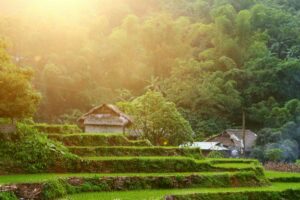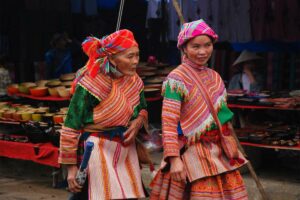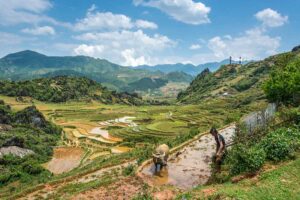Y Linh Ho Village is a picturesque destination in Sapa, ideal for those interested in trekking and experiencing a homestay with local ethnic minorities. Nestled in the stunning Muong Hoa Valley in northern Vietnam, this village offers a glimpse into the traditional lifestyles of the H’Mong and Dao people.
About Y Linh Ho Village
Location
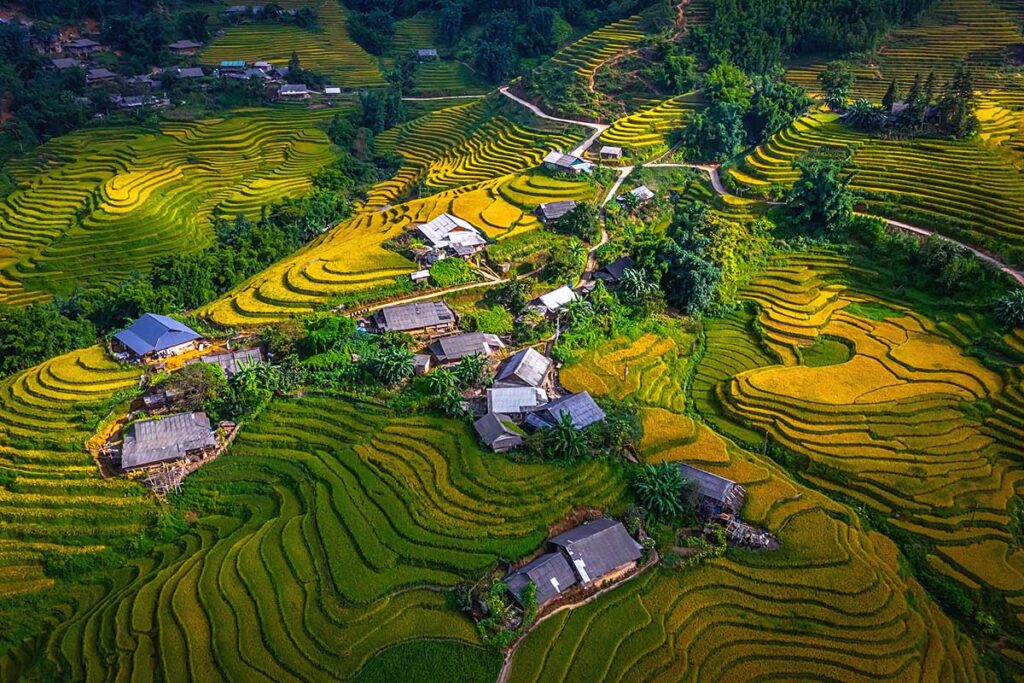
Y Linh Ho Village is located approximately 7 kilometers southwest of Sapa town. This makes it an easy trekking destination for those staying in Sapa, providing a wonderful opportunity to explore the local landscape and culture.
Ethnic groups
The primary ethnic groups residing in Y Linh Ho Village are the H’Mong and Dao people. These groups are known for their rich cultural traditions and unique way of life.
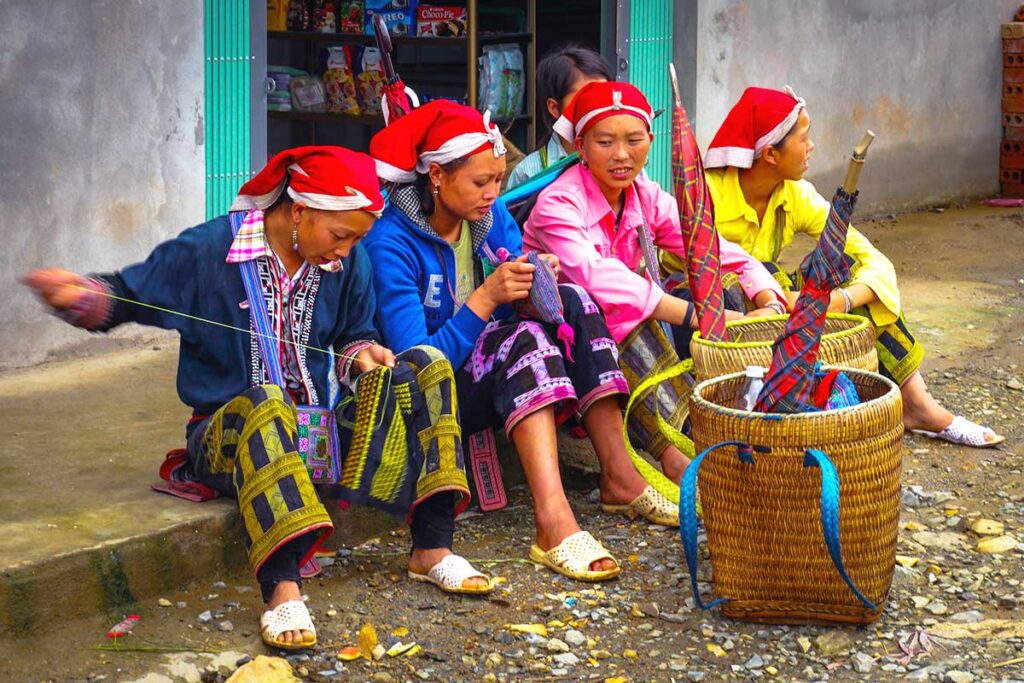
- H’Mong People: Known for their vibrant traditional clothing and intricate embroidery, the H’Mong people have a deep connection to their ancestral lands. They are skilled farmers and artisans, living a life closely tied to the cycles of nature.
- Dao People: Although fewer in number today, the Dao people have left a significant cultural imprint on the village. They are recognized for their distinct red turbans and traditional herbal medicine practices.
The H’Mong and Dao people of Y Linh Ho Village live in simple, yet well-crafted homes made from bamboo and wood. These houses are typically located near terraced fields, where they cultivate rice, corn, and sweet potatoes. The villagers’ lifestyle revolves around farming, which is their main source of livelihood. They also engage in traditional handicrafts, which they often sell to tourists visiting the area.
The village
Y Linh Ho Village has a rich history that dates back several generations. According to legend, the village was named after its founder, Mr. Ly Linh Ho, a leader of the Dao people who originally settled the area. Over time, as the Dao people moved to other regions, the H’Mong people settled in the village but retained its original name to honor its founder.
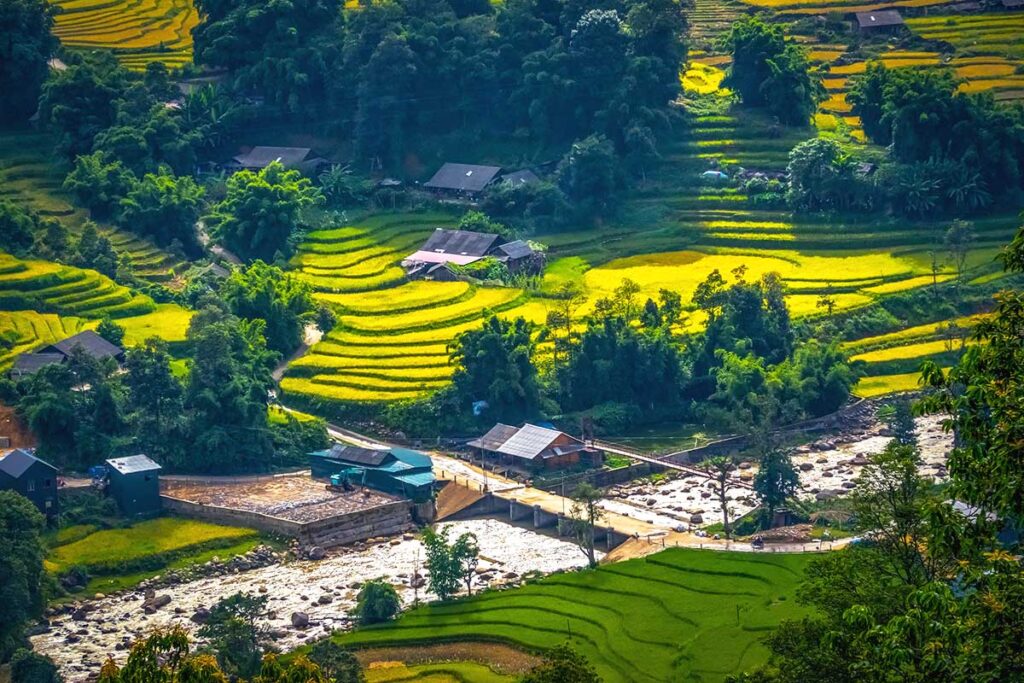
Today, Y Linh Ho Village is divided into two communes: Y Linh Ho 1 and Y Linh Ho 2. Each commune has about 100 households. The village layout is typical of traditional settlements, with homes built close to the terraced fields to facilitate farming activities. The use of bamboo and wood in house construction reflects the villagers’ deep connection to their natural surroundings.
Highlights of Y Linh Ho Village
1. Exploring ethnic minority life
Immersing yourself in the indigenous culture at Y Linh Ho Village is one of the most rewarding activities in Sapa. This village is home to the H’Mong and Dao people, known for their warm hospitality. The H’Mong’s wooden and bamboo houses are particularly intriguing and worth a visit. Here, you can stay in stilt houses, participate in harvesting rice on terraced fields, and learn traditional handicrafts.
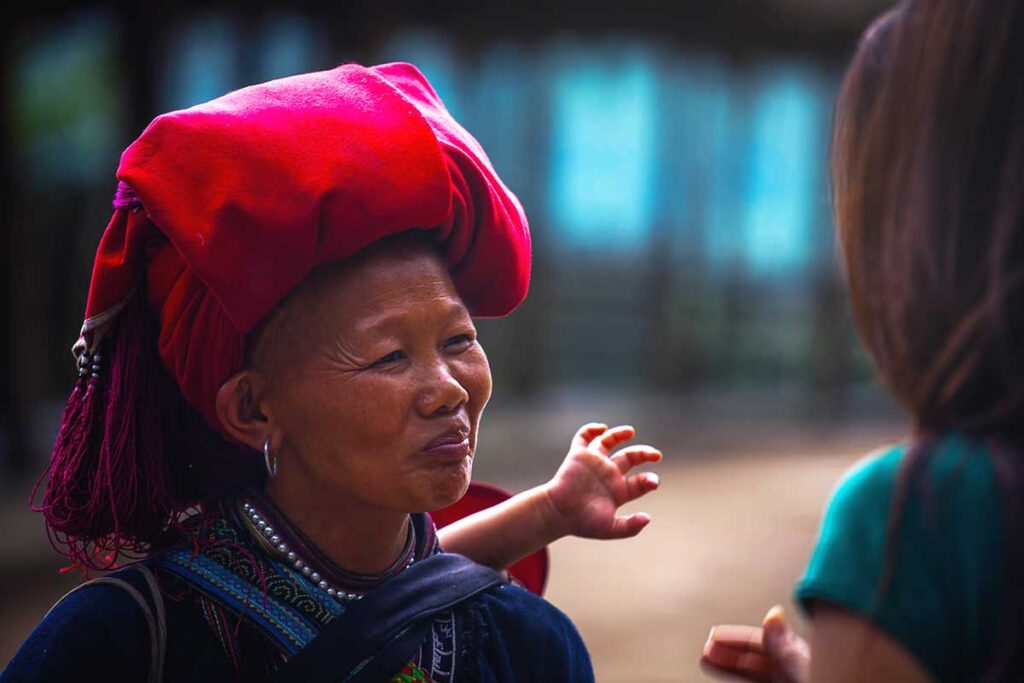
The locals are keen to share their culture and customs with visitors. You can join them in daily activities such as weaving fabric and textiles. Purchasing handmade products like brocade scarves, embroidered cushions, or ethnic instruments not only supports the local economy but also gives you unique and practical souvenirs to take home.
2. Homestay experience
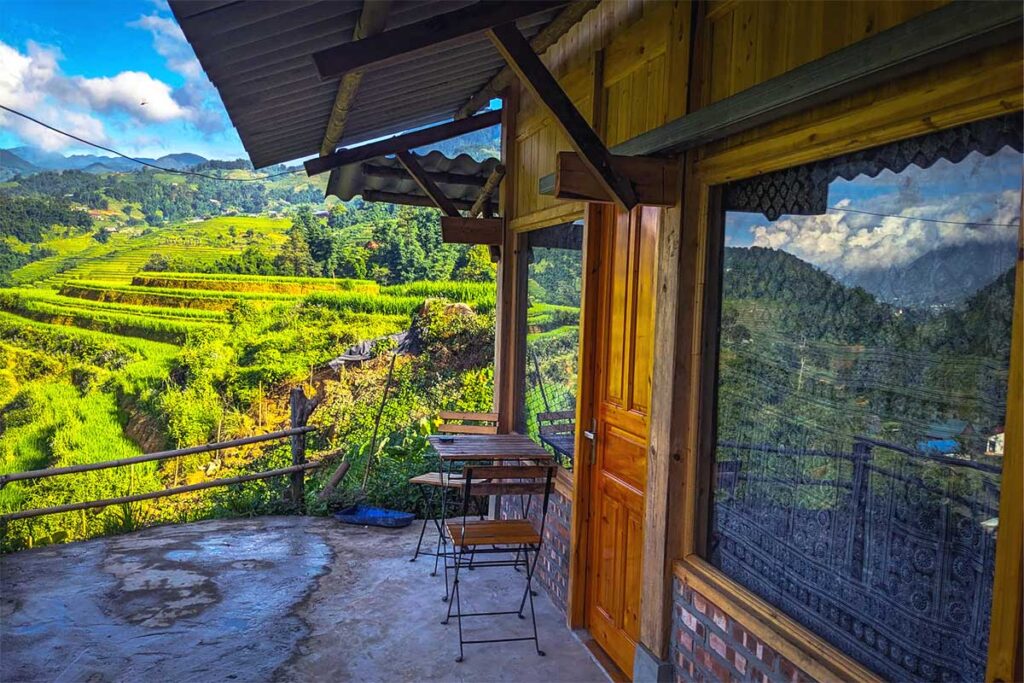
Y Linh Ho Village offers a great opportunity to stay overnight in a local homestay. You can choose between more comfortable homestays with private rooms or basic ones with dormitory-style accommodations. The basic homestays often feel more authentic, allowing you to live closely with the local ethnic people and experience their way of life firsthand.
Combining a homestay experience with a trek from Sapa to Y Linh Ho is highly recommended. On the first day, you’ll trek through stunning and tourist-friendly areas. The next day, you venture further into the valley to less touristy, more local areas. This combination provides the best of both worlds and an amazing homestay experience, making it a perfect Sapa trekking trip.
3. Trekking destination
Y Linh Ho is a popular trekking destination from Sapa due to its proximity and breathtaking landscapes. The area boasts some of the most extensive and picturesque terraced rice fields, covering large parts of the mountains and valley floor. A scenic stream runs through the valley, adding to the charm. The combination of rice fields, ethnic villages, and the stream creates an irresistible allure, attracting many visitors.
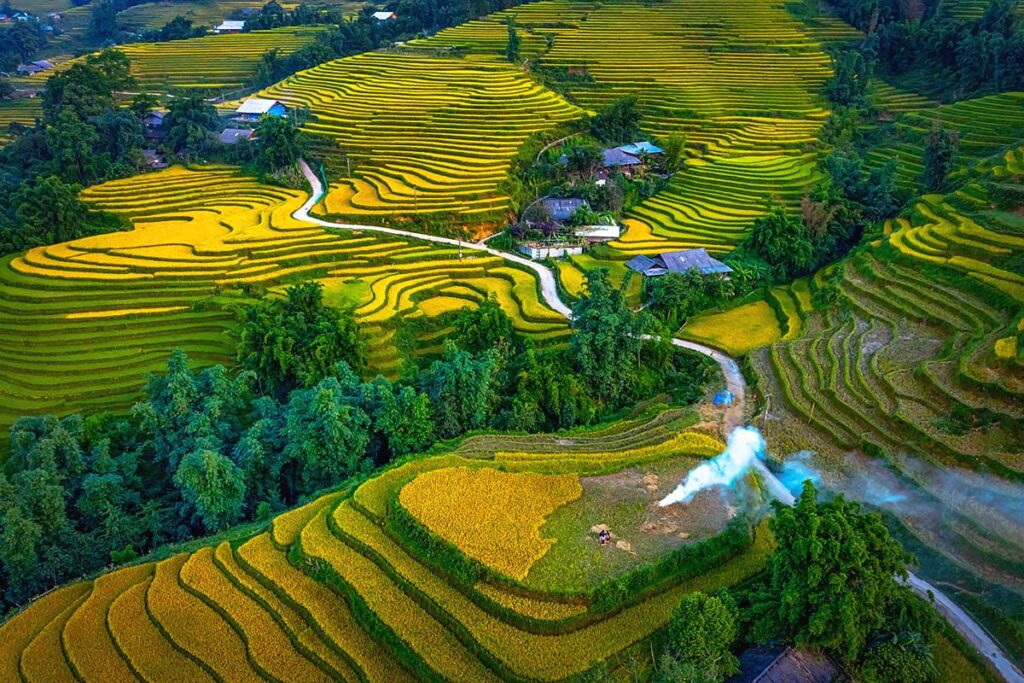
At Local Vietnam, we can design a trekking tour to Y Linh Ho that avoids the busiest tourist trails. Despite its popularity, the scenery around Y Linh Ho is so stunning that it’s worth visiting. By using off-the-beaten-path routes, we ensure a more authentic experience, allowing you to enjoy the beauty of the area without the crowds.
4. Visit Surrounding Villages
Nearby villages like Ta Van and Lao Chai are easily accessible from Y Linh Ho. You can hike between these villages, taking in the beautiful countryside and terraced rice fields. Each village offers its own unique charm and insights into the local way of life, making these hikes a wonderful addition to your visit.
5. Learn how to make handicrafts
Y Linh Ho is now a tourist destination where the government and locals offer various services for you to explore and experience traditional culture. Local women are happy to teach you how to weave brocade, and you can take home the products you create as gifts for family and friends. Additionally, there are many practical items available for purchase, such as embroidered cushions, brocade towels, ethnic musical instruments, and other souvenirs.
How to get there
Located about 7 km southwest of Sapa Town in the Muong Hoa Valley, Y Linh Ho Village is accessible via the main Muong Hoa Road, which branches off into smaller side roads leading down to the village. Here are the best ways to get there from Sapa:
Taxi
Taking a taxi from Sapa town is the easiest way to reach Y Linh Ho. The 7 km journey by taxi will cost around $10-15 USD. Note that taxis can only take you as far as the entrance of the village, after which you will need to walk the rest of the way. Alternatively, you can take a motorbike taxi, which is cheaper and can navigate closer to the village, though this is less practical if you have a lot of luggage.
Hiking Yourself
It’s possible to hike to Y Linh Ho on your own. However, getting a taxi back from Y Linh Ho can be challenging due to the lack of availability. It might be more convenient to take a taxi from Sapa to Y Linh Ho and then hike back.
Trekking Tour
Joining a trekking tour ensures that everything is arranged for you. Your guide will lead you to Y Linh Ho using off-the-beaten-track routes and show you the best viewpoints. Meals and transportation back to Sapa are included.
You can also opt for a multi-day trek, staying overnight in Y Linh Ho and exploring less touristy trails the next day.
If you have only one day for trekking, you can start your trek in Y Linh Ho, with your guide arranging transportation to the village and hiking further from there. At the end of the trek, a car will be ready to bring you back to Sapa.
Homestays in Y Linh Ho Village
What to expect
Y Linh Ho Village offers a range of homestay experiences from basic to more comfortable accommodations. Here’s what you can expect:
From Basic to More Comfort: While luxury accommodations are not available, you can find some comfortable homestays with modern amenities such as Wi-Fi and private rooms. On the other hand, basic homestays offer a more authentic experience with less comfort. These typically feature hard mattresses and dormitory-style rooms, but they provide an incredible insight into the local culture, making for an unforgettable experience.
Standards: Regardless of whether the homestay is basic or more comfortable, each one is required to have Western-style toilets, showers, and mosquito nets. This ensures a minimum level of comfort and hygiene for all visitors.
Family Dinner: As there are no real restaurants in the village, meals are usually provided by your homestay. This is another highlight of staying in Y Linh Ho Village. You can watch the local family cook over an open fire and later share a traditional dinner with them. Often, the host will invite guests to drink rice wine, a special local experience. You can politely decline if you prefer not to drink.
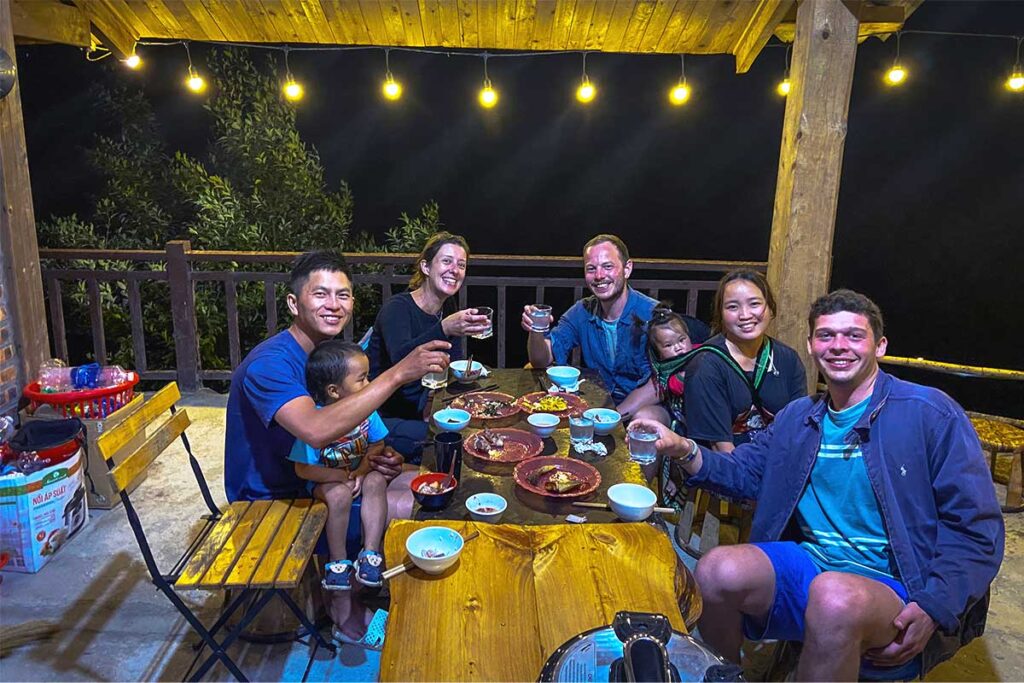
Recommended homestays in Y Linh Ho Village
Tips for visiting the village
Bring cash
- There are no ATMs in the village, and card payments are not possible. Make sure to carry enough cash for your stay.
Appropriate clothing
- Bring warm clothes if you’re visiting in winter, as it can get quite cold. For other seasons, opt for lightweight outfits that allow easy mobility, especially for trekking.
Carry personal documents
- Ensure you have your personal documents, such as your passport, for hotel check-ins and other services in Sapa. Homestays require your passport to register you with the local police.
Gifts for children
- Avoid giving candy or money to children as these are not useful to them. Instead, bring books or pencils if you wish to give them something.
Photography etiquette
- Always ask for permission before taking photos of people. This shows respect for their privacy and culture.
Respect the rice fields
- Do not stand in the rice fields, as these are crucial for the villagers’ livelihood. Stick to designated paths and areas.
Best time to visit
- The best months to visit are March, April, May, September, October, and November for pleasant weather. To see the rice fields at their best, visit between July and early September, though this is also the rainy season.
Handling local vendors
- Some locals may follow you to chat and try to sell their products. If you’re not interested, a friendly “No” will suffice, and they will eventually stop following you.
Visit other villages
